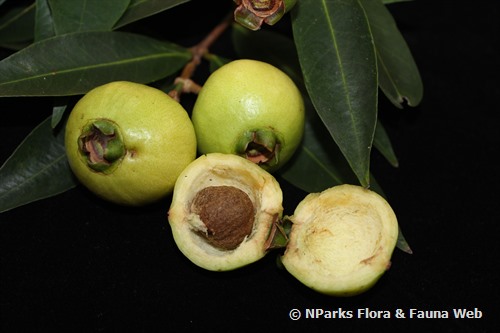
Back
Syzygium jambos (L.) Alston
| Family Name: | Myrtaceae |
| Synonyms: | Eugenia jambos |
| Common Name: | Rose Apple, Malabar Plum, Jambu Air Mawar, Jambu Mawar, Jambu Kraton, Jambu Kelampok, Jambu Mawer |
Name
Classifications and Characteristics
| Plant Division | Angiosperms (Flowering Seed Plants) (Dicotyledon) |
|---|---|
| Plant Growth Form | Tree (Small (6m-15m)) |
| Lifespan (in Singapore) | Perennial |
| Mode of Nutrition | Autotrophic |
| Maximum Height | 10 m |
| Tree or Palm – Trunk Diameter | 0 |
Biogeography
| Native Distribution | Malesia |
|---|---|
| Native Habitat | Terrestrial (Secondary Rainforest, Coastal Forest) |
| Preferred Climate Zone | Tropical |
Description and Ethnobotany
| Others - Plant Morphology | Growth Form: Small, evergreen tree with a dense, spreading crown. Habitat: Occurs in the tropics and subtropics, but it grows best in the tropics at altitudes of 0 - 1200 m. Trunk: Short, low-branching trunk has brown, smooth bark. Foliage: Glossy, opposite leaves are oblong to lanceolate with entire leaf margin and long tapering tip (9 - 26 cm long, 1.5 - 6 cm wide). Flowers: Large pom-pom shaped flowers (5-10 cm wide) are arranged in inflorescences known as corymbs. Fruits: Fleshy, pitted fruits are known as drupes (2.5 - 5 cm wide). They are whitish to yellow, round to egg-shaped and smell like rosewater. The fruit apex has a crown-like structure formed by a persistent calyx (the outermost layer of a flower that often resembles small leaves). Landscaping: This species is grown as a roadside tree or fruit tree in home gardens. Cultivation: This species is tolerant of most soil types including waterlogged soils. Optimal growth will occur in acidic to neutral soils (pH 5.5 - 7). Trees should be spaced 5 m x 6 m apart. It is susceptible to fungal diseases, such as root rot, leaf spots and anthracnose. Propagation: Propagate by seed, budding, air layering, and grafting. Propagation by seed is the most common method, but seeds do not store well and must be sown promptly.Etymology: The genus name "Syzygium" is derived from the Greek word "suzugos" which means joined. Syzygium used to be the name of a Jamaican plant species with paired leaves and branches. It is commonly known as Rose Apple, because the fruits can be distilled to produce rosewater. |
|---|---|
| Ethnobotanical Uses | Edible Plant Parts : Edible Fruits Food (Fruit or Vegetable) Others: Food: The fruits are consumed raw or cooked. Although this species is grown in home gardens for its fruits, it is usually not grown in commercial orchards. Other: Essential oils in the leaves are extracted by distillation and used in the perfume industry. |
Landscaping Features
| Landscape Uses | Suitable for Roadsides, Coastal |
|---|---|
| Thematic Landscaping | Economic Garden |
| Usage Hazard - Cons | Toxic Upon Ingestion |
Plant Care and Propagation
| Light Preference | Full Sun |
|---|---|
| Water Preference | Moderate Water |
| Plant Growth Rate | Moderate |
| Rootzone Tolerance | Fertile Loamy Soils, Well-Drained Soils, Poor Infertile Soils, Waterlogged Soils (Drains Site), Saline Soils / Salt Spray |
| Propagation Method | Seed, Grafting, Marcotting |
| Propagation Method Remarks | Budding |
Foliar
| Foliage Retention | Evergreen |
|---|---|
| Mature Foliage Colour(s) | Green |
| Mature Foliage Texture(s) | Glossy / Shiny |
| Foliar Type | Simple / Unifoliate |
| Foliar Arrangement Along Stem | Opposite |
| Foliar Shape(s) | Non-Palm Foliage (Lanceolate, Oblong) |
| Foliar Venation | Pinnate / Net |
| Foliar Margin | Entire |
| Foliar Apex - Tip | Acuminate |
| Foliar Base | Acute |
| Typical Foliar Area | Mesophyll ( 45cm2 - 182.25 cm2 ) |
| Leaf Area Index (LAI) for Green Plot Ratio | 3.0 (Tree - Intermediate Canopy) |
Non - Foliar and Storage
| Trunk Type (Non Palm) | Woody |
|---|---|
| Mature Bark Texture | Smooth |
| Root Type | Underground (Tap Root) |
Floral (Angiosperm)
| Flower & Plant Sexuality | Bisexual Flowers |
| Flower Colour(s) | White |
|---|---|
| Flower Symmetry | Radial |
| Inflorescence Type | Corymb |
| Flowering Period | Once Yearly |
| Flowering Habit | Polycarpic |
Fruit, Seed and Spore
| Mature Fruit Colour(s) | White |
|---|---|
| Fruit Classification | Simple Fruit |
| Fruit Type | Fleshy Fruit , Drupe |
Image Repository
Others
| Master ID | 1868 |
|---|---|
| Species ID | 3161 |
| Flora Disclaimer | The information in this website has been compiled from reliable sources, such as reference works on medicinal plants. It is not a substitute for medical advice or treatment and NParks does not purport to provide any medical advice. Readers should always consult his/her physician before using or consuming a plant for medicinal purposes. |

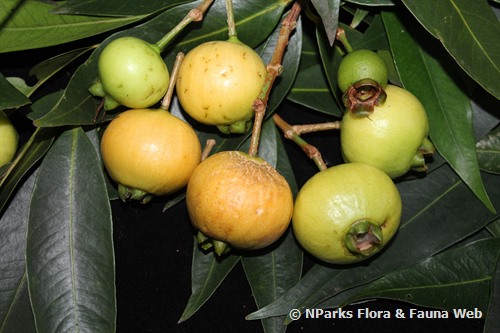
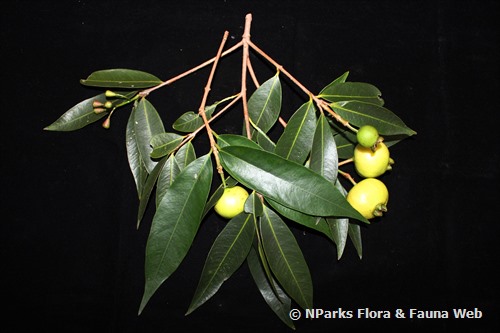
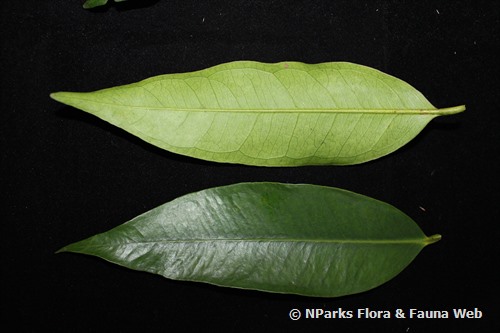
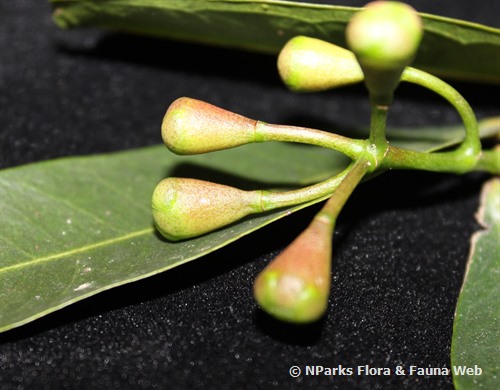
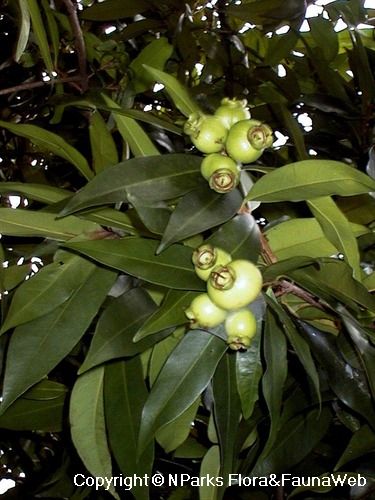
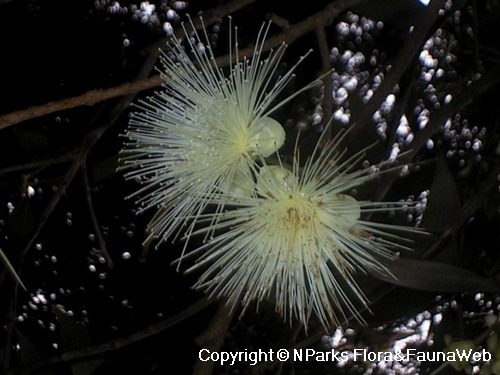
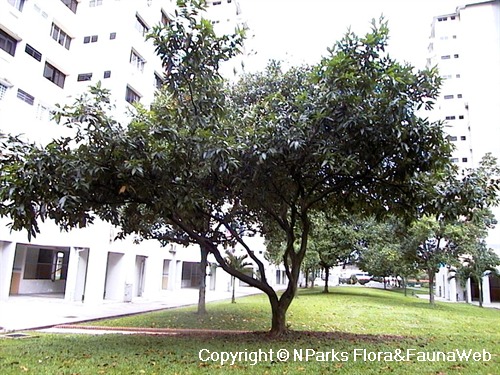
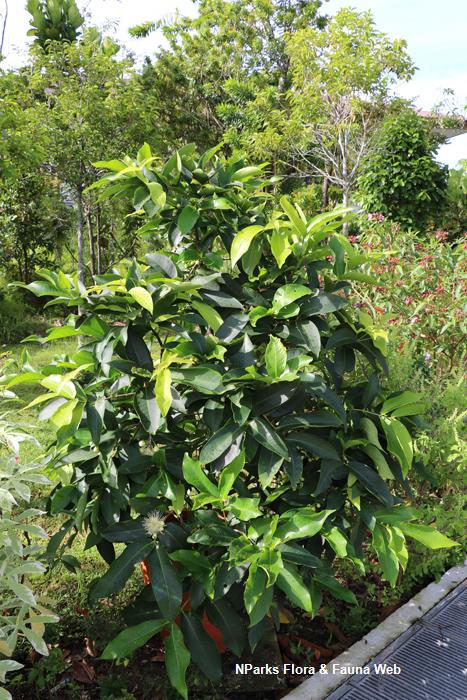
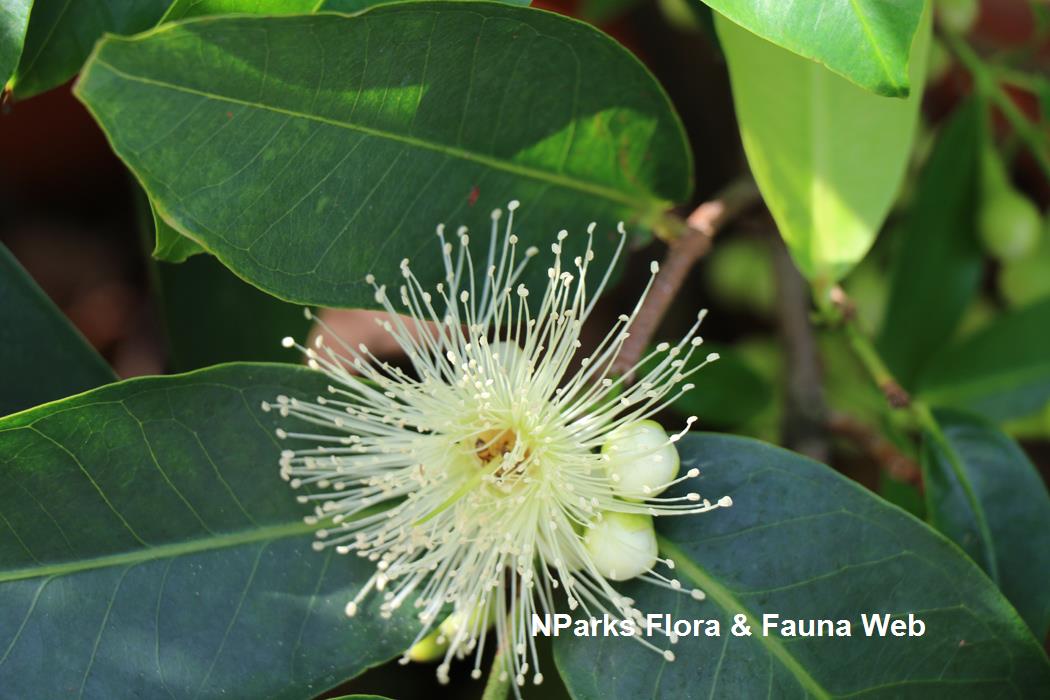
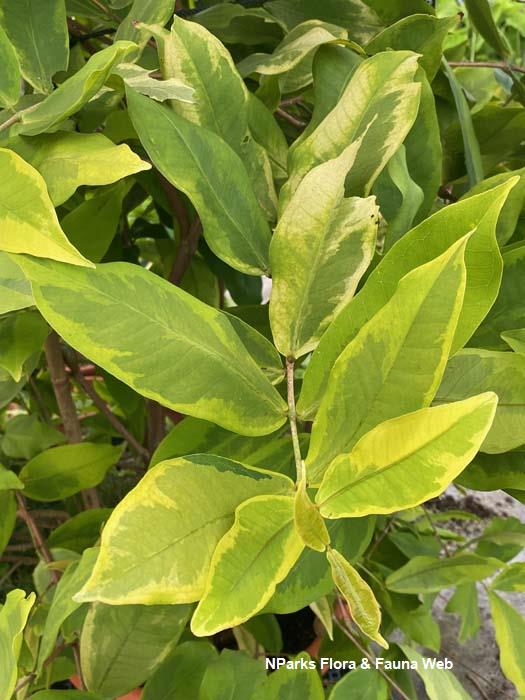

_lowres.jpg)